12 April 2021 | Nicolai Khalezin, KYKY.ОRG
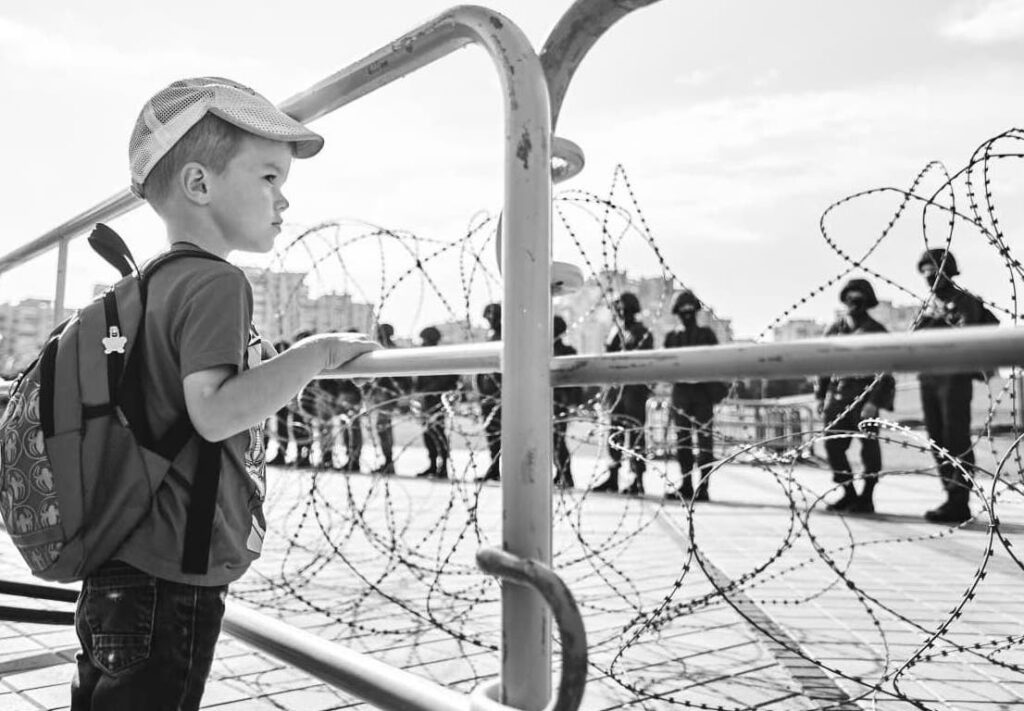
The current events in Belarus might have made you draw a comparison with the Third Reich in Germany. If so, it might be useful to refer to this text published by Niсolai Khalezin, the program director of the Creative Politics Hub and the Art Director of the Belarus Free Theater, where he compares the ideology of Lukashenko with that of the main characters of the 30–40s of the last century. KYKY publishes his text, reminding readers that the point of view of the author may not coincide with the opinion of our editorial board.
On 1 February 2020, Belarus introduced criminal charges for the spreading of Nazism. As recently as March 2021, the regime authorities urgently introduced a series of changes to the laws governing “Countering Extremism”, which strengthened the position of the government by expanding the definition of the term “extremism” to classify nearly any action of the civil society as such. To understand which model Lukashenko’s regime is resorting to, it is worth turning to the recent history of Belarus. Specifically, the last 26 years.
The regime’s brutal approach to suppress the fully peaceful Belarusian protests brought back the memories of World War II, when the Belarusian population was forced to defend themselves against the ruthless repression machinery of the Third Reich. After witnessing the terror of the OMON special forces in the Belarusian cities, the nation could not help but compare OMON operations to the prior fascist occupation. The OMON’s black-colored uniforms reminded one of the Nazi SS troops; the behavior of olive-colored special forces seemed too close to that of the Abwehr troops of Adolf Hitler’s Generalplan Ost period.
Even the Soviet post-war period, however totalitarian in nature, showed no such degree of cruelty. In other words, the post-Soviet era showed cruelty only in specific aspects, such as the use of the death penalty and the dictates of ideological expediency. Some may still remember the bloody suppression of the Novocherkassk workers’ uprising in 1962, or the pogroms in the Uzbek Fergana Valley in 1989, but those took place under the cover of total control of the media, while the 2020/21 Belarusian regime is acting openly in front of the whole world without any hesitation.
The nervous reaction of the government to the comparison with the Third Reich has another, very important reason: the models developed in Nazi Germany were (and remain) attractive and valuable for the current regime and for Alexander Lukashenko personally.
The War That Hitler Won
Propaganda should be popular, not intellectually pleasing. It is not the task of propaganda to discover intellectual truths.
Joseph Goebbels
“The War That Hitler Won” is not a falsification of history, but the title of a book that US historian Robert Edwin Herzstein published in the late 1970s. It is this book that was on the bedside table of the man who developed the ideological foundation of Lukashenko’s regime at its onset – the man was the deputy head of the Presidential Administration, Colonel Uladzimir Zamyatalin.
Born in Tula, trained at the Military Political College in Donetsk, and promoted to a colonel in the Soviet Army, he became the press spokesman for Prime Minister Vyacheslav Kebich at the time of the 1994 presidential election. After Lukashenko’s victory, Zamyatalin first worked in his team as the head of the main directorate for socio-political information and then as the first deputy head of the Presidential Administration. Uladzimir Zamyatalin was a champion of fascism, “Russki Mir” ideology [i.e. “Russian World”, originally a cultural concept which is often used to ideologically legitimize Russian influence in the post-Soviet space], and violent methods of solving problems. It was Zamyatalin who supervised the creation of the Belarusian branches of Russian National Unity [a paramilitary neo-Nazi political party in Russia] and wanted to form them into groups of stormtroopers, analogous to the storm groups in Nazi Germany.
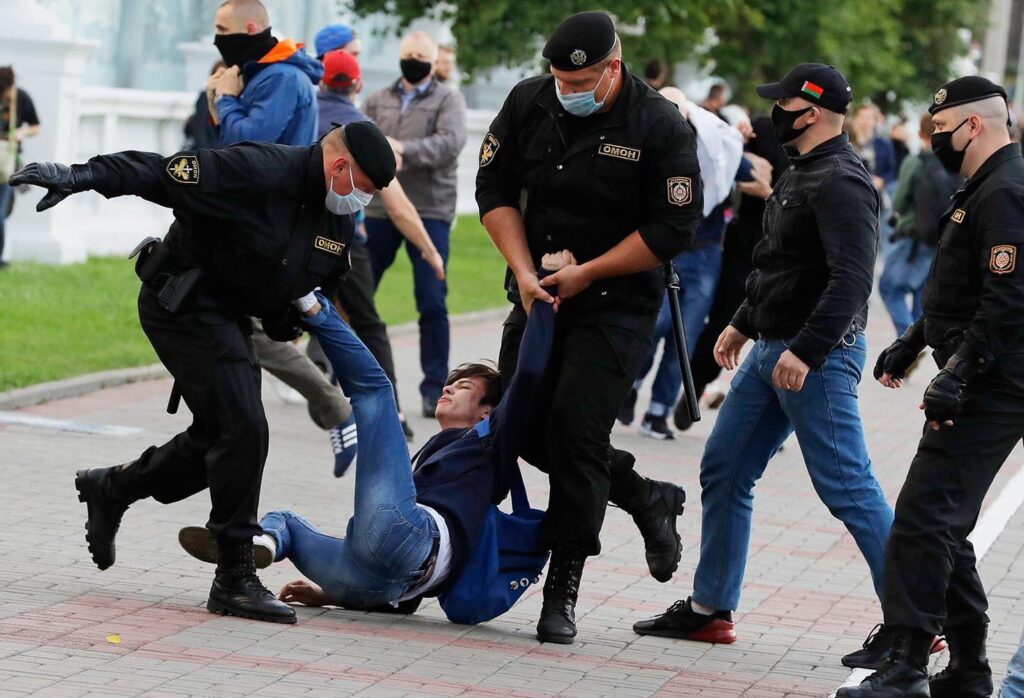
There is an interesting fact that underlines the views of Uladzimir Zamyatalin. One day, he commissioned Eduard Eydzin’s think tank to develop a concept for a Belarusian state ideology and gave him certain thesis statements that this ideology should be based on. Eduard passed this task on to Kim Khadzeyeu, who was supposed to do most of the work. After a short while, Kim returned the assignment to Eydzin and refused to develop the concept. When Eduard asked Kim why he refused to work on the program, Kim replied: “They ask me to write a Mein Kampf.”
The book “The War That Hitler Won”, revealing the mechanisms of action of the Nazi leadership, aroused Zamyatalin’s interest, above all, through the figure of Joseph Goebbels, who controlled the entire Nazi propaganda apparatus. It was from this book that Zamyatalin drew his ideas for creating mechanisms to control the media, including the radio, which in 1995 did a disservice to Lukashenko.
The Yadrantsau Case
I have no conscience. My conscience is Adolf Hitler.
Attributed to Hermann Göring
In 1995, then young President Alexander Lukashenko gave a lengthy interview to the German business magazine Handelsblatt. This came as a surprise to all observers because the choice of publishing venue was, to put it mildly, strange for a person whose knowledge of the functioning of an economy did not go beyond the level of a state farm. Journalist Markus Zimmer flew to Minsk to talk to the head of the state, not knowing that the head of broadcasting supervision, Uladzimir Yadrantsau, would also be present during the interview.
Yadrantsau’s mission was simple – to record the conversation and immediately transmit the audio to the state radio for broadcasting. Unfortunately for him, he did exactly what he was told. Only because of this did the general public find out what the Belarusian president thought of one of the greatest criminals of the 20th century, Adolf Hitler:
“One day it took a strict government to lift Germany out of the ruins. It wasn’t all bad in Germany under the famous Adolf Hitler. […] The German order had been developing for centuries, and this process reached its climax under Hitler. This is what reflects our understanding of a presidential republic and the role of the president in it. […] Germany owes its rise to a strong government and the fact that the whole nation was able to consolidate and unite itself around a strong leader.”
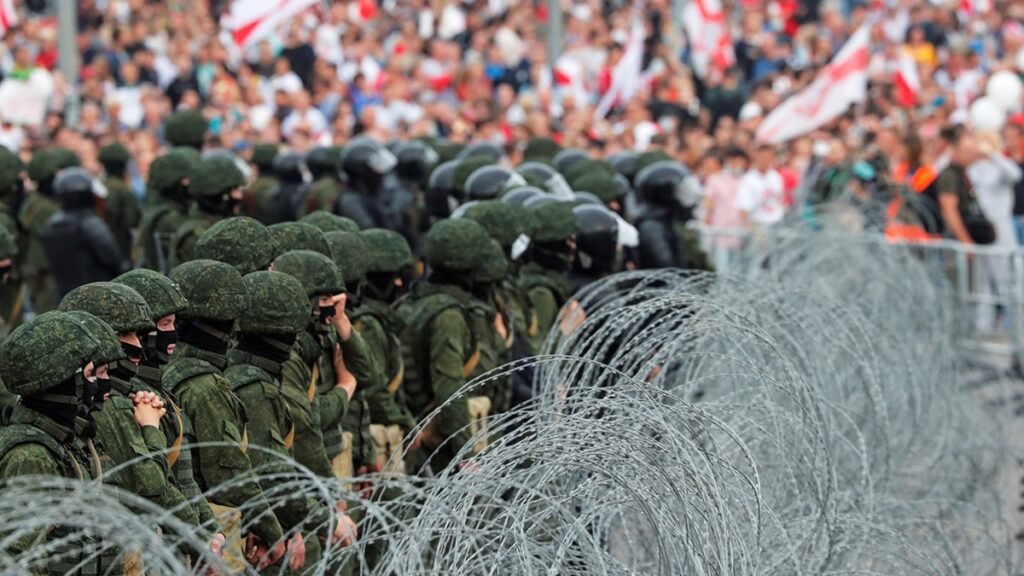
The interview in the Handelsblatt was published without this quote. When I got a chance to ask Markus why the quote about Hitler hadn’t made it into the newspaper, he replied: “Our editorial office would have immediately lost its license for the propaganda of Nazism.”
In recent years, Belarusians have often been reminded of this quote because it largely explains the direction that the country has taken – from foreign policy to relations between the state with civil society.
Generational Change
Whoever has the youth has the future.
Adolf Hitler
Zamyatalin’s political archaism could not last long. His ideological dominance ended around the turn of the century, and he died in 2019 in complete oblivion. Shortly before his death, he had drawn attention for his scandalous rudeness to a supermarket cashier because she had spoken to him in Belarusian.
The ideological development in Belarus and the answer to the question of who inherited the legacy of neo-fascism can be scrutinized in many ways but, in this context, cannot be complete without the figure of Vsevolod Yanchevsky. Yanchevsky understood what Zamyatalin had aimed at by founding paramilitary units and expanding the influence of Russian National Unity (RNE) in Belarus, then transformed it into a less aggressive but equally destructive ideological model that was targeting primarily the youth. We are talking about the Belarusian Republican Youth Association (BRSM), discussed at length below.
Zamyatalin came to a standstill in his flirtation with the “Russki Mir” for a number of reasons. One of them was that he did not fully conceptualize the reality that “Belarus is not Russia”. For a while, he assumed that the romantic image of the strong young fighter armed with the idea of a “Great Russia” might be attractive, and all his efforts were devoted to developing an RNE branch in Belarus. An active role in this project was played by the director of the Minsk Kamarouski market, who, among other things financed through his black cash desk, financed the Belarusian branch of the RNE under the guise of “Slavyansky Sobor Belaya Rus” [a political party in Belarus, 1992-1999]. At that time, propagandist Jury Azaronak, who is the father of well-known propagandist Ryhor Azaronak, and Vsevolod Yanchevsky, the current Director of Hi-Tech Park, played active roles in the “Slavyansky Sobor”.
The Belarusian branch of the RNE did not shy away from anything, not even from attacks, fights, or other acts of violence that were ordered by their “curators”. For example, in 1999, Charter ’97 activists, including leading opposition politician Andrei Sannikov, were beaten in the center of Minsk in the middle of the day by a group led by Hleb Samoylau, the head of the Belarusian wing of the RNE. In 2000, Samoylau was stabbed in the hallway of the apartment building where he lived.
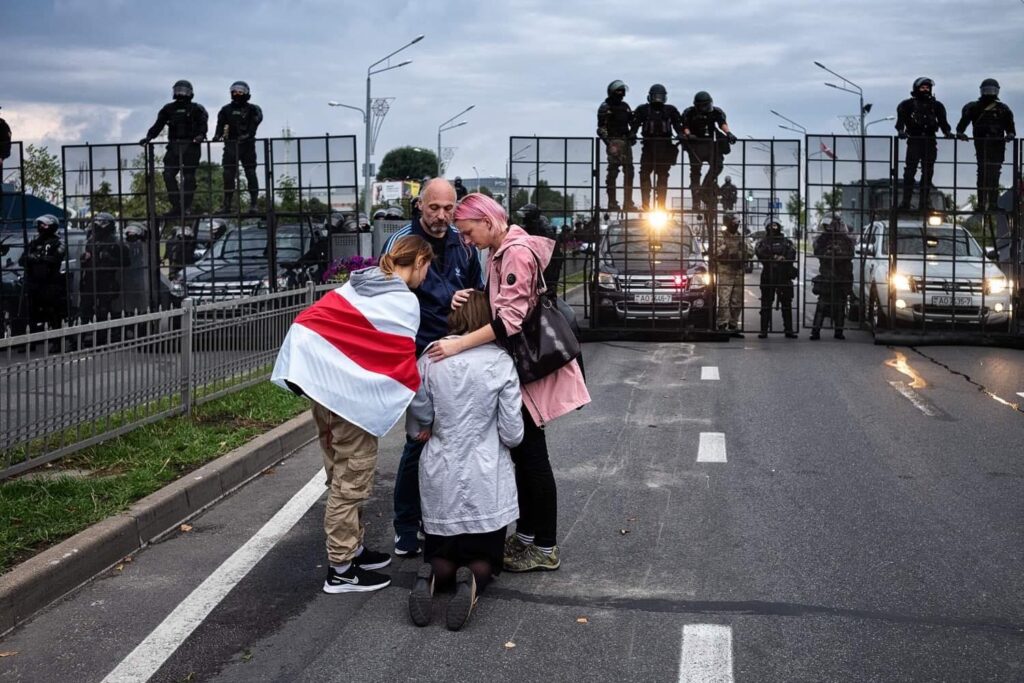
After realizing that the place of the leader of the pro-government youth organization was vacant, Yanchevsky acted immediately and created “Direct Action” – an organization akin to the Hitler Youth, replenished by young and energetic romantics. The movement did not live long because the authorities needed to formalize the process by dragging it into the legal field. First, “Direct Action” evolved into the Belarusian Patriotic Youth Union, and in 2002, after a series of organizational manipulations, it turned into the current Belarusian Republican Youth Union (BRSM).
While the BRSM lost the romantic allure of the stormtroopers, it was given another purpose that is no less important to an authoritarian regime: the creation of a conformist environment for young people. The only requirement a young person had to satisfy in order to make a career was to join the ranks of the BRSM. Simply joining was enough to protect one from suspicion of disloyalty to the government. If one was actively involved, this opened up the possibility of joining the ranks of Lukashenko’s bureaucrats. For these initial years, nothing more was required. This changed in the autumn of 2020.
Only then did it become clear for what purpose these units had been created by the Red Guards [a reference to Mao’s Red Guards at the time of the Cultural Revolution]. From the most unscrupulous among them, one could form vigilante groups to which first non-lethal and then lethal weapons could be entrusted. In other words, it became possible to form the stormtroopers that Colonel Zamyatalin had dreamed of, now on a legal basis.
Parallels and Crossings
I know there are some people in Germany who become sick when they see these black uniforms, we understand the reason for this, and do not expect we shall be loved by all.
Heinrich Himmler
The latest history of Belarus was divided into the “before” and “after” by another turning point on 9 August 2020. It was the first time since World War II that a group of Belarusians gave the order to fire on other Belarusians. For all the differences in the contexts, the similarity of the situations is that both on 9 August 2020 and during the war, armed Belarusians were killing peaceful Belarusians. But there is one radical difference that is not in favor of the current Belarusian government: during World War II, Belarusians were killed by the orders of the occupying forces of another country; on 9 August 2020, by the orders of the country’s own leadership.
To list the parallels between the current Belarusian realities and the time of the Third Reich in detail, one article is hardly enough – it would require a more extensive study. It is enough, however, to simply skim through the facts to understand where Alexander Lukashenko’s regime “draws inspiration” from.
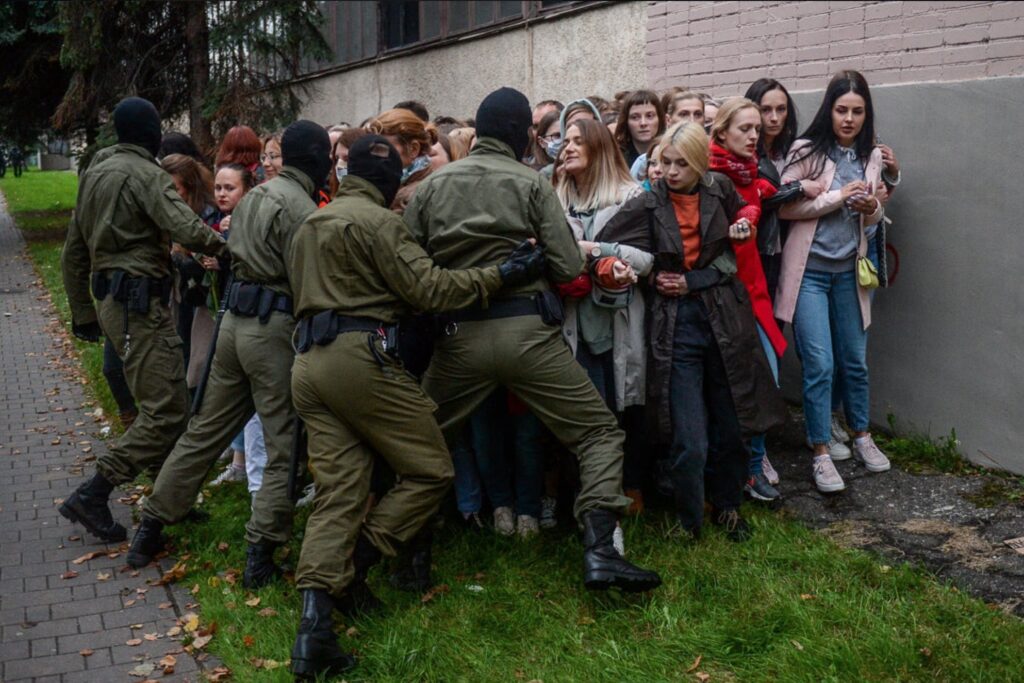
Following the example of his predecessor, Adolf Hitler, the first thing the Belarusian dictator did when he came to power was to change the historical symbolism. The difference is once again in the details. While Hitler recruited specialists from various fields – historians, heraldists, designers, and even theologians – Lukashenko relied on his own meager knowledge of history, limited by the Soviet period. Hitler changed the system of symbols not only for the country but for the supporters of Nazism around the world; Lukashenko referred to the visual associations of the recent period, targeting the audience from the elderly generation guided by the nostalgia for Soviet times.
Lukashenko has always tried to present himself as an internationalist and advocate of democratic development, while essentially being sexist, racist, and anti-Semitic, regularly emphasizing that in his speeches. One very compelling case happened behind the scenes of the concert hall when he saw television director Bakhtsiyar Bakhtsiyarau, who was recently released from prison, and asked: “What is this Azerbaijani doing in freedom?” It was the nationality that he put at the top of all other measures. Incidentally, Bakhtsiyarau, who had been paroled, was taken back to prison without explanation a few days later to serve his sentence in full.
Another quote: “When you visited Babruisk, have you seen the state of the city? It was scary, it was a pigsty. It was a predominantly Jewish town, you already know how the Jews treat the place where they live. […] Look at Israel, I’ve been there. I definitely don’t want to offend them, but they don’t care if the lawn is mowed, like in Moscow, the Russians, and the Belarusians.” Here we see a literal similarity to Hitler in the choice of the persecuted nation.
Following a similar pattern to Nazi Germany, even the Sinti and Roma (“gypsies”) came under repressive fire in Belarus. After the unjustified police pogroms in villages inhabited by the Sinti and Roma, then Minister of Internal Affairs Ihar Shunevich replied to a journalist’s question: “The minister has neither a reason nor an incentive to apologize to the Sinti and Roma. Is it clear?”
Shunevich also stood out as a rabid homophobe who, following the example of Nazi ideologues, forced the press service of the Ministry of Internal Affairs to publish official texts that humiliate homosexuals. In this case, however, he simply echoed his boss Alexander Lukashenko, who repeatedly secreted homophobic tirades. He openly expressed his views even to the German Foreign Minister Guido Westerwelle, an openly gay man, by expressing the idea of exiling homosexuals to Belarusian villages for re-education.
In some cases, Lukashenko managed to demonstrate his sexist and homophobic views all at once: “It is our fault, the fault of men, that today a woman has replaced a man for a woman. This is our fault. I’m sorry about that. For some women, we have failed as men. What they should have found with us, they began to look for in women. That’s why I pity this lesbianism. That’s bad, but I’m not judging.”
After 9 August, the similarity between the Belarusian regime and the Third Reich has moved from the field of semantics to the sphere of visualization and tactility.
Mobile stormtroopers trapped civilians in residential areas, just like Jews were in the Third Reich, to be sent to ghettos or concentration camps. House break-ins, beatings, and open looting.
Belarusian prisons were turned into Gestapo-like torture rooms, with the full arsenal of violence from beatings and humiliations to mutilations, rape, and murder.
Some scenes began to resemble the Nazi occupation in every detail: people on their knees with their hands raised up against the wall; barbed wire fences in the center of Minsk; peaceful citizens surrounded by men in uniform. Sometimes, the only difference is that unlike Lukashenko’s tormentors, the Nazis did not hide their faces.
The construction of concentration camps and zones for displaced persons became the climax of the parallels and coincidences.
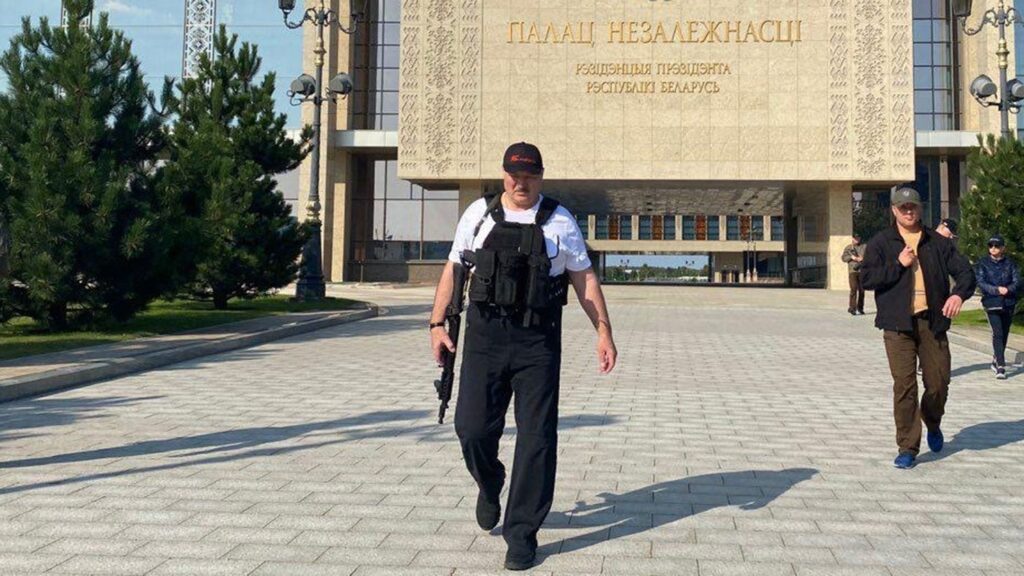
Executioners and Victims
Our constitution is the will of the leader.
Hans Frank
If we try to sum up the evolution of the dictates of both the Belarusian regime and the Third Reich, we will see a movement from the initial following of the law to its complete disregard. It affects even the laws that the dictators tailored to their own needs. Even though at first, both Adolf Hitler and Alexander Lukashenko worked closely with their legislative bodies to achieve legitimization of their own actions, this need disappeared over time – their countries were transformed into zones that were not regulated by laws, but to the contrary, by vices, desires, and strength.
On 26 April 1942, in a session of the Reichstag, Adolf Hitler announced: “I will not rest until every German realizes that it is shameful to be a lawyer.” This is another credo of Alexander Lukashenko, following from the model of complete disregard of the law. The Nazis used this pattern to send lawyers to concentration camps; the Belarusian regime also revokes licenses and imprisons lawyers who dare to defend political prisoners.
“An American will not fight in the ‘Desert Storm’ without social guarantees, [good] salaries, and five sorts of ice cream, but merely a maroon beret and the ‘elite fighter’ title is enough for our people,” said former Minister of Internal Affairs of Belarus and current presidential aide Yury Karaieu, the man who participated in the creation of concentration camps and is one of those who unleashed the bloody terror against Belarusians.
“Merely a maroon beret and the ‘elite fighter’ title” is the corruption algorithm that was copied by the Belarusian regime from the Nazis and optimized for the modern world. To the motto “You are from the elite unit”, the Belarusian rulers added subsidized housing, low-interest loans, uncontrolled bonus payments, increased pensions after 20 years of service, anonymity when carrying out criminal orders, and a waiver of prosecution. The result is the creation of an entire social class that acts according to the Hermann Göring principle: “Here I don’t have to worry about Justice; my mission is only to destroy and to exterminate, nothing more.”
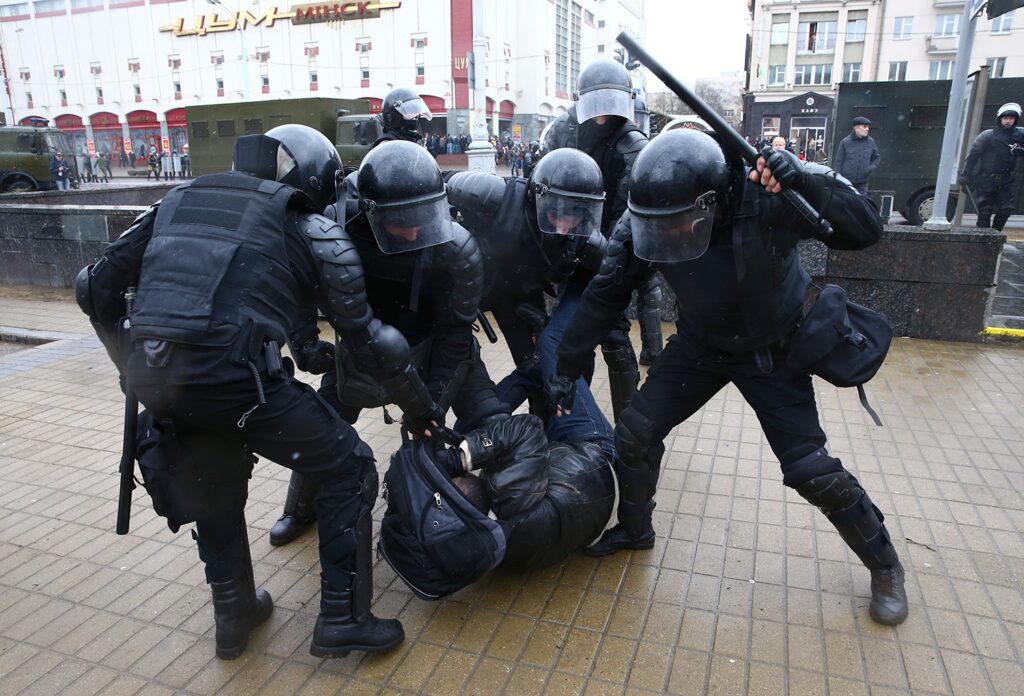
The Führer’s Winter
If the war is lost, the German people will be lost too. It is not necessary to take into account the fundamentals which the German people need for their most primitive survival. On the contrary, it is better to destroy these things yourself […] Besides, those who remain after the battle are only the inferior ones, for the good ones have been killed.
Adolf Hitler
If we translate Lukashenko’s current reality into “Nazi”, it becomes clear that he is living through his “bunker phase”: he is a pariah to the whole world, with a ruined economy, hated by his compatriots, fenced off from the whole world, suffering from phobias and mental illnesses, distrusting of his surroundings…
The only difference is that he still has a partner who is also actively involved with the Nazi model and regularly tries out pieces of it. The paradox, however, is that this “partner” himself would like to bomb the “bunker” and take possession of the remnants of the property of the Belarusian dictator; and Lukashenko knows that very well. An analogy with the couple Hitler – Stalin, though apparent, is not entirely accurate because of the different levels of influence of Alexander Lukashenko and Vladimir Putin in the world, whereas the scale of the Nazi and Soviet regimes was comparable at the time.
Historically, the “bunker regime” does not last long, with North Korea being an exception rather than the rule. It is important to understand, however, that the end of Nazism became predetermined only when there was a complete combination of forces opposing it:
- The Eastern Front represented by the Soviet Army
- The Second Front, consisting of Allied troops
- The Anti-Fascist movement inside Germany
- The Anti-Hitler coalition, consisting of 58 countries by the end of World War II
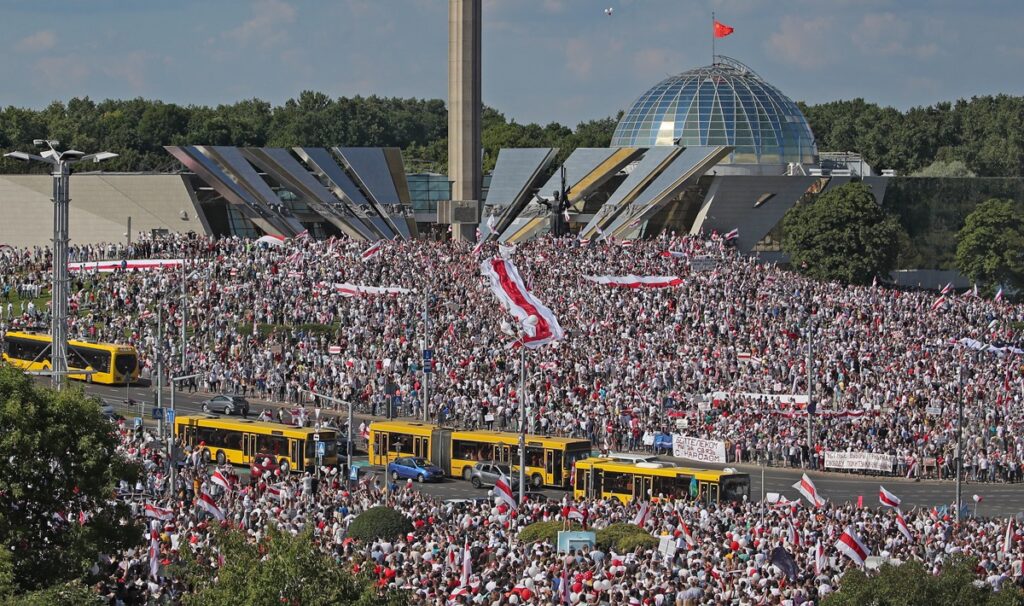
Certainly, we do not need such impressive military and economic resources to overthrow Lukashenko’s regime, but we do need synchronized actions on the part of the elements that represent basically the same segments of the world political order:
- The Front, represented by the Belarusian people inside the country
- The European Union, in the format of the Anti-Lukashenko coalition
- The Second Front, represented by the United States, capable of influencing the world economy
- The Anti-Lukashenko movement within government agencies
The mobilization of all these elements of the system presents the greatest challenge for Belarusians who want to get rid of the dictatorship. If it becomes possible to mobilize each of them, the result will not be long in coming, even in the short term.
Alexander Lukashenko once said a paraphrase of a quote from Adolf Hitler, which was taken as an epigraph to this chapter; he said: “I am the president of the state, and this state will exist as long as I am the president.” But we all should understand that a bunker is not a state, it is just that – a bunker.